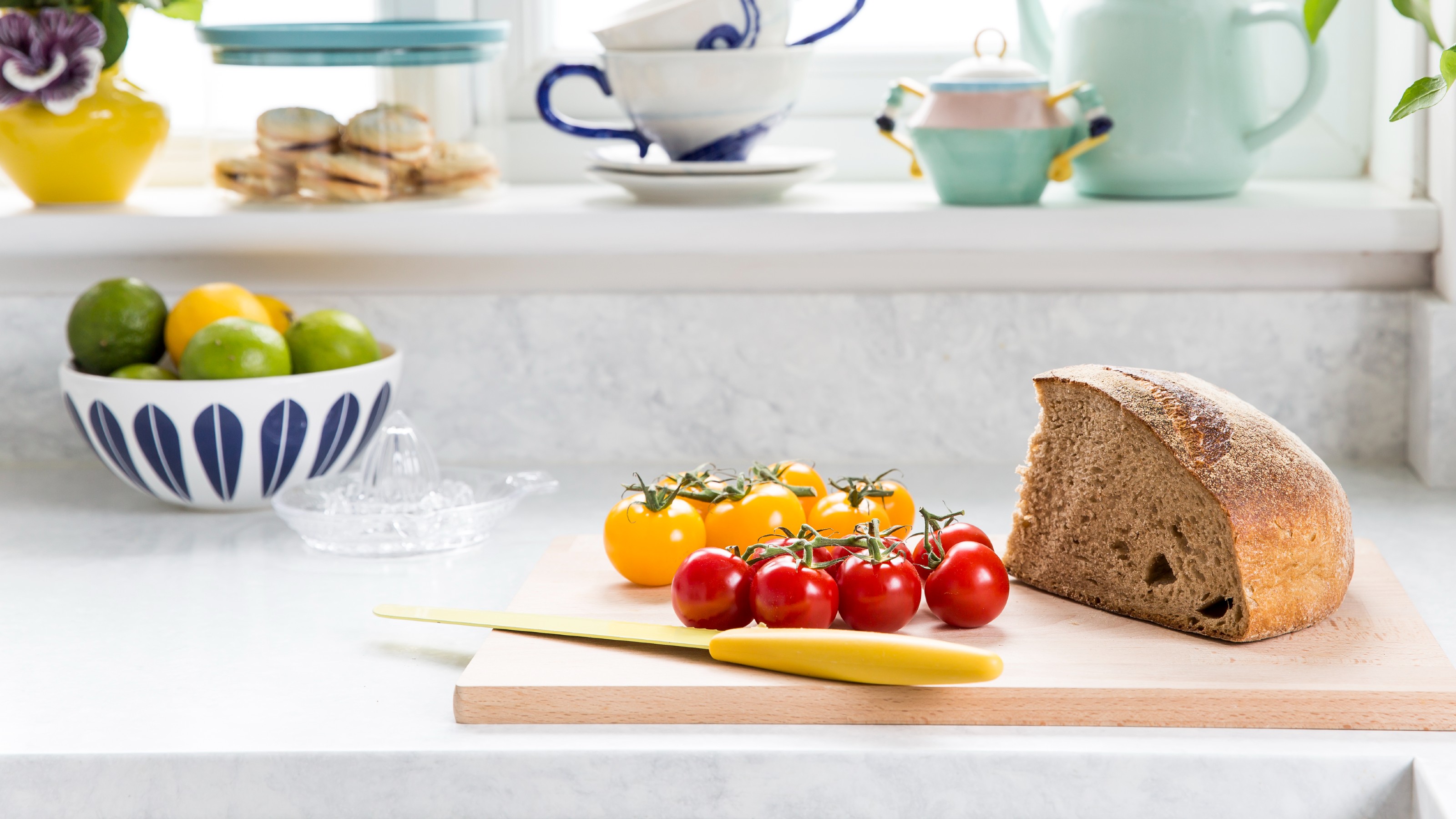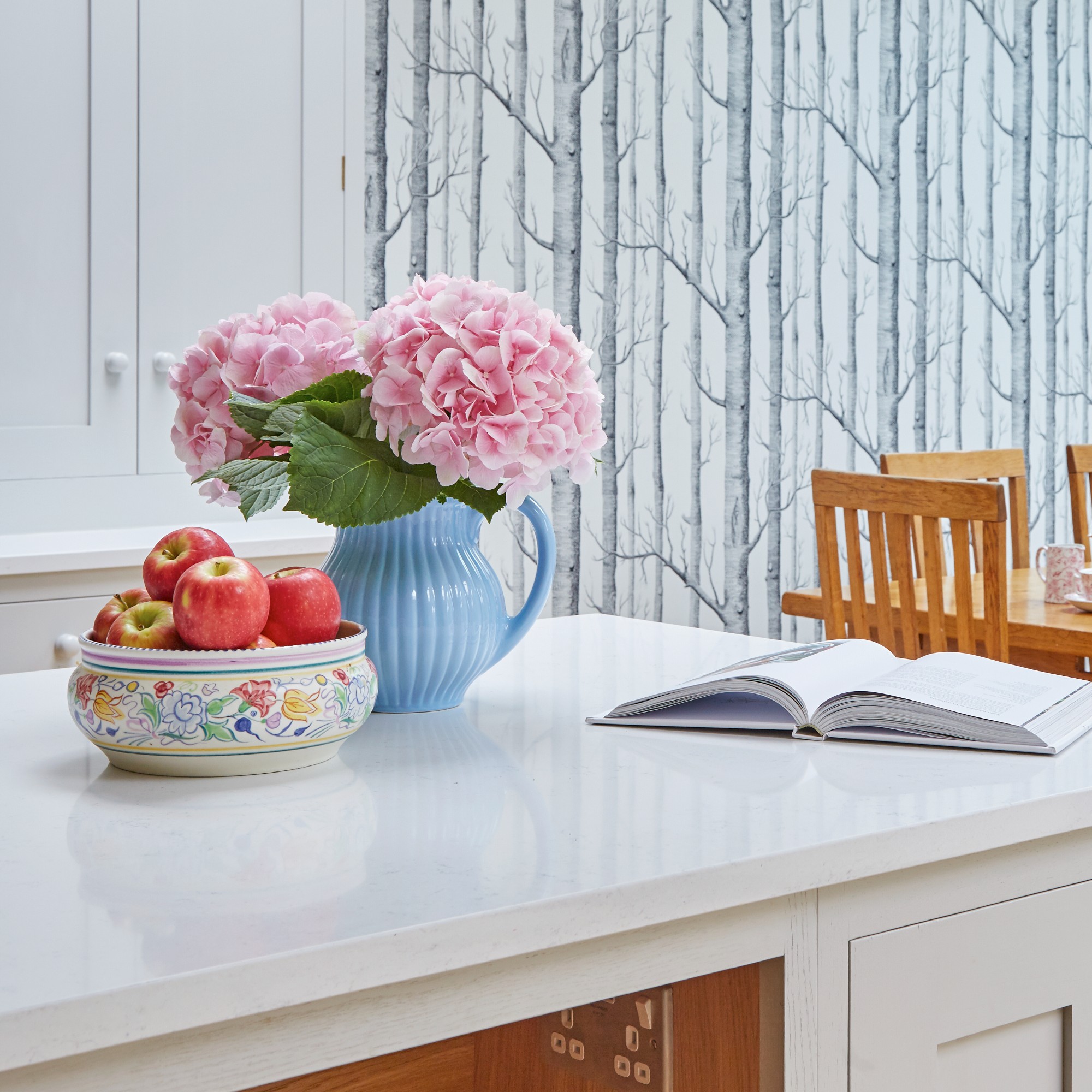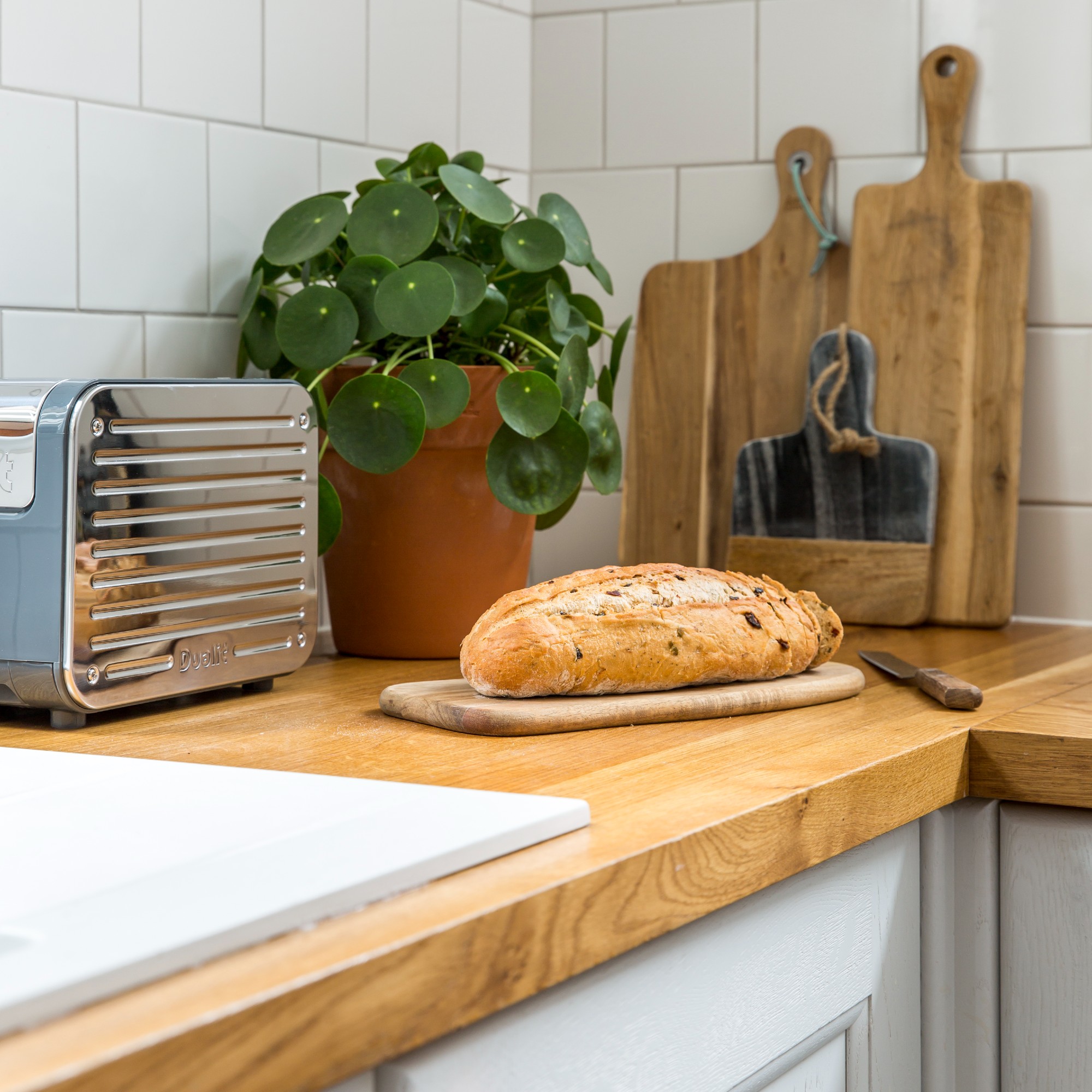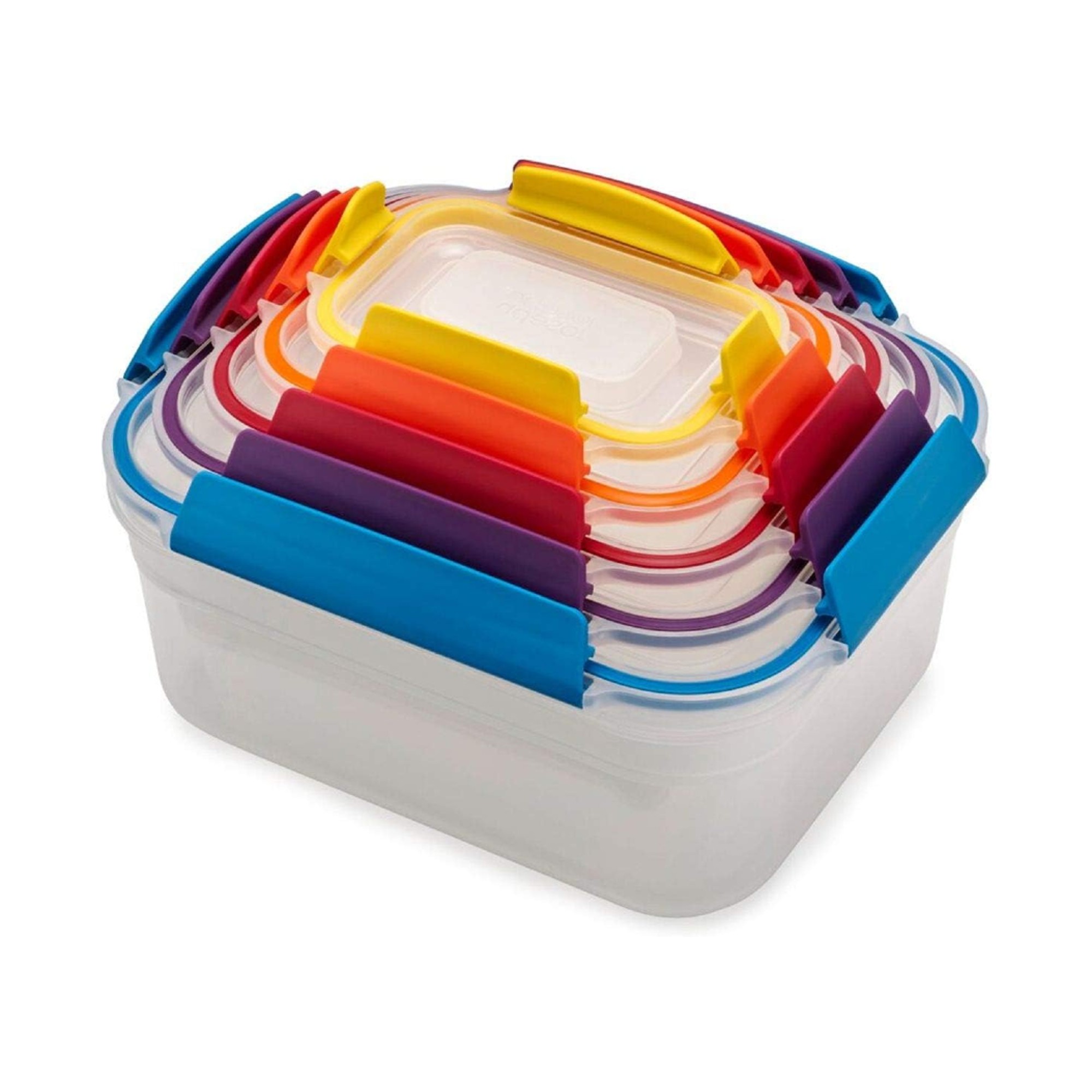Smart kitchen storage hacks to make your food last longer
Food storage tips – how to store different types of food properly to make them last the longest, according to experts


We all want our food to last as long as possible because wasted food is both unsustainable and uneconomical. But it’s difficult to navigate the best food storage practices when it differs so significantly from one food group to another. Which is why we’re breaking down how to store food to make it last longer today.
We’ve consulted our panel of storage and organisation experts to give us their best kitchen storage ideas when it comes to different foods – from bread to blueberries and everything in between. We’ve tried to cover all the bases.
Some might seem obvious, while others may shock you. So without further ado, these are our smart kitchen storage hacks to make your food last as long as possible.

How to store food to make it last longer
‘As a professional organiser I come across many households that have wasted so much money on food that’s either gone off or been forgotten about or simply just not stored the best so it’s spoiled,’ starts Siân Pelleschi, owner of Sorted! and APDO president, warning about common kitchen storage mistakes.
Charlotte Bird from Brabantia continues, ‘Everyone will have their preferred methods for storage, but where you store your food is important. In most instances, it is always best to follow the recommendation on the packet or follow where it’s stored in the supermarket. But once things are open it isn’t always clear, so here are some tips to level up your kitchen storage game.’
And these food storage tips include both kitchen pantry ideas and proper fridge storing methods.

Siân Pelleschi is the owner of Sorted!, a Cheshire-based home and office decluttering and organising service, and the current President of APDO - the Association of Professional Declutterers and Organisers. With Sorted!, she aims to take away the stress and hassle that everyday life can sometimes bring, both in your home and working environment.
1. Blueberries and strawberries

Investing in some airtight containers might be a good idea as these are commonly recommended for storing different types of food, including small fruit like blueberries and strawberries.
Sign up to our newsletter for style inspiration, real homes, project and garden advice and shopping know-how
‘Keeping items in airtight containers really helps to increase shelf life and, in some cases like with some fruit, giving them a vinegar wash in the first instance before containing them in a glass air tight container gives them an extra few weeks. This works really well with berries like strawberries and blueberries,’ Siân explains.
But make sure you dry your berries before putting them in the container as otherwise they could become breeding ground for mould and bacteria.
‘To keep bacteria at bay, ensure your blueberries and storage container are dry. Place a piece of kitchen towel at the bottom of the container,’ recommends Richard Joseph, co-founder of Joseph Joseph.
2. Tomatoes

There’s a bit of a debate going on about the correct storing of tomatoes. As on one hand, keeping them in the fridge means they will last longer. But on the other hand, the cold temperature could negatively impact the taste of the tomato.
‘Ripe and nearly ripe tomatoes tend to keep the longest when stored in the fridge,’ Richard says. ‘The cool temperature helps prolong their ripening time; however, this can negatively impact the taste and texture of unripe tomatoes, which tend to taste best when left to ripen at room temperature. If you need your tomatoes to last for a few additional days, it’s best to keep them in the fridge in a well-ventilated container on the top shelf and close to the door - as this is usually the warmest spot.’
3. Fruit

‘Fresh fruit can be difficult to store,’ Charlotte says. ‘Whilst a fruit bowl may look healthy, it may not be the most efficient way of storing it. To keep the fruit fresher for longer, it should be stored in the fridge.’
And if you like your bananas, just make sure you keep them away from the rest of the fruit.
‘Keep bananas away from other fruit as they, similarly to onions, produce a gas that makes other fruit ripen much quicker,’ Siân warns.
4. Potatoes and onions

The proper way how to store potatoes and onions doesn’t include a fridge as these veggies generally like cool and dry places like a pantry. But similarly to bananas, it’s best to keep these two apart as they don’t have the best of effects on each other.
‘Vegetables generally like to be in cool and dry areas but try to keep your potatoes and onions separated from each other as the onions produce a gas that makes the potatoes spoil prematurely. Equally, the potatoes can cause onions to turn brown and mushy,’ Siân says.
5. Fresh herbs
The best way to store your fresh store-bought herbs is to take them out of the plastic packaging they usually come in and trim their stalks at the bottom. Then place them in a jar with water, much like you would a bouquet of flowers, and leave in the fridge.
6. Spices

‘For herbs and spices, the container they come in is often a good vessel for storage. Good practice is to store them away from direct sunlight,’ Charlotte says.
Richard elaborates on why that is, ‘Fragrant herbs and spices can lose their flavour if left out in direct sunlight on your kitchen counter. To prolong their life, it’s best to store dried spices in a cool, dark place away from heat sources, such as the oven or hob.’
So your kitchen cupboard or pantry is the best place for them.
7. Bread

‘If you like bread but don’t tend to eat much of it, you can freeze half a loaf to defrost for another time,’ Siân advises. ‘If you are going to freeze it make sure you cut it into slices if it isn’t already and that way you can just take the slices you need. Also keeping the bread in airtight containers or just taking the air out of the bag it comes in each time can really help extend its life.’
Hopefully with this knowledge, now we won’t have to throw away spoiled food ever again. Fingers crossed!

Sara Hesikova has been a Content Editor at Ideal Home since June 2024, starting at the title as a News Writer in July 2023. She is now also the Ideal Home Certified Expert in Training on Furniture, and so far has tested over 150 different sofas.
Graduating from London College of Fashion with a bachelor’s degree in fashion journalism in 2016, she got her start in niche fashion and lifestyle magazines like Glass and Alvar as a writer and editor before making the leap into interiors, working with the likes of 91 Magazine and copywriting for luxury bed linen brand Yves Delorme among others.


![GOOD FOR YOU Glass Food Storage Containers - [10 Pack]](https://cdn.mos.cms.futurecdn.net/WA6nvn4uRkfj6RSnP4YYgF.jpg)